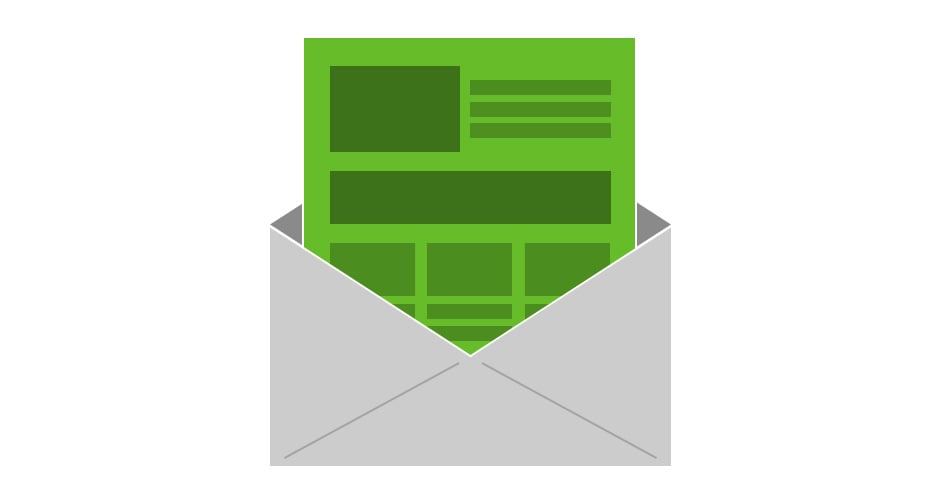Subject Line Hacks to Get Your Emails Opened
Updated

The email subject line is one of the most powerful tools in your marketing arsenal, and one of the most difficult to master.
Not only are there many factors to consider, success rates vary wildly based on your audience, content, and time and day of send. There’s no universal foolproof method for crafting the perfect subject line, but these guidelines will give you a solid starting point.
Value
Subject lines that tell the user what the email will do for them are more likely to get your email opened. So rather than simply stating what’s in the email (Ways to Groom Your Dog), tell recipients what value the email will offer them (Grooming Techniques That Will Delight Your Dog).
Capitalization
Using ALL CAPS in subject lines can trigger spam filters, but it can be effective if used sparingly. For example, a test of a Halloween-themed financial planning email delivered with the subject line “DON’T GO IN THERE! Scary Financial Traps to Avoid” performed much better than the same subject line without the all caps.
Emojis
Using symbols or emojis in subject lines is increasingly popular. Should you do it? It depends. Be careful what type of symbol you use, because not all devices will accurately display all symbols. And symbols must fit the personality of your company and the tone of the email. Aside from potentially increasing open rates, emojis can make your email stand out, quickly convey a mood or idea, and help reduce character count.
Length
According to email marketing platform MailChimp, in most cases there is no statistical link between subject line length and open rate, so testing is the only way to be sure what works for you. More and more emails are opened on mobile devices, and mobile users see fewer characters than those on a desktop, so put the important information at the beginning of your subject line. To make sure your subject lines are the right length to be read by mobile users and to avoid any unfortunate cutoffs (i.e., Tips for Creating the Perfect Memory Blanket vs. Tips for Creating the Perfect Memory Blank…), Test Subject lets you enter your email sender name, subject line, and preheader text and will show you how they appear on the most popular mobile devices.
Numbers
Next time you’re in the checkout line at the grocery store, take a look at the magazine covers. You’ll see a lot of numbers: “10 Surefire Ways to Look Younger,” 35 Great Meals You Can Make in Minutes,” etc. Magazine publishers know that people respond to numbers and lists, and that innate tendency transfers to emails as well. Bigger numbers do better, and odds are better than evens. And if you’re using a number in a subject line, use a numeral rather than spelling it out.
Personalization
According to a study by Yes Lifecycle Marketing, emails with personalized subject lines are 50% more likely to be opened and receive 58% more clicks than those that are not personalized. Names aren’t the only way to personalize—you can also use location (Hot Happenings in Des Moines!), interests (Spa Deals for This Weekend—Book Now!), remarketing (Still Interested in Solar Panels?), and any other key data you have about your customers.
Preheader Text
The short summary text that follows the subject line when an email is viewed in the inbox (called the preheader or preview text) is a valuable piece of online real estate that too many email marketers don’t utilize properly. Rather than repeating the subject line or the headline of your email, use the preheader creatively to expand on the information in the subject line. So, if your subject line is “5 Ways to Winterize Your Home,” your preheader text might elaborate with “Avoid frozen pipes with these valuable tips.”
Questions
Can you phrase your subject lines in the form of a question? If so, your emails may perform better. Questions naturally raise the reader’s curiosity and make them want to know the answer (by opening your email). Instead of “Tips for Being a Better Boss,” for example, try “Are You the Best Boss You Can Be?”
Spam Words
There’s no definitive list of words or phrases that will automatically get your email tossed in the spam bucket, but words and phrases that will increase your email’s chance of going astray include “free,” “$$$,” “act now,” “earn extra cash,” etc. When in doubt, run your email through a free spam checker such as ISnotSPAM or Mail-Tester.
Tone
When composing email subject lines, bear in mind that you’re communicating with actual humans—what would you say to them in person to try to get them interested in your email? Would your approach be light and humorous or businesslike and to-the-point? If you keep your customers firmly in mind when composing your subject line, you have a better chance of striking the right tone to get them to click “open.”